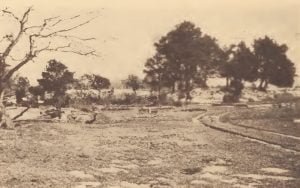Powhatan had a great deal of authority as chief in the Powhatan government system. He assumed to such an extent the prerogatives of his office that in no region known in eastern North America was there any stronger semblance to a native monarchy as a form of government. 1 Details are lacking as to his predecessors and the character of their government, yet it might be inferred that if any rigid inheritance ruling had characterized the office of Powhatan it would have been referred to by someone at the time, since much importance was attached to the concept of sovereignty in the minds of the English royalists, who were indeed greatly impressed, and we may imagine unduly, by the pomp of the Indian king. Certainly the Pamunkey did not maintain the idea of royal descent in the sense in which it was understood by the English, for Powhatan’s mantle fell upon Opekankanough, supposed to be his brother, and not upon his sons who were well known.

The line of succession following Opekankanough is not well enough known for us to reconstruct any scheme of transfer right. Nevertheless, from the recorded fact of descent from Powhatan to his sisters’ sons, we might infer that it was of the usual east-central Algonquian pattern, often materially inherited and open to whatever development might be made of it. Powhatan accordingly seems to have been more of a demagogue than the usual Algonquian chiefs of history Tecumseh, Pontiac, Philip, and Uncas.
Pamunkey succession from the time of Totopotomoi’s widow, about 1677, is broken by a gap, as the Indians did not know how to write and their councils were not recorded. 2 Referring to traditions, however, and written proceedings still extant among the tribal papers, we find the names of:
- H. Langston Tazewell, elected life chief from 1850-1858
- Thomas Cook, elected life chief from 1858-1880 3
- Thomas Langston, chief from 1880-1890
- William Bradby, chief from 1890-1894
- Charles S. Bradby, chief from 1894-1898
- Theo. T. Dennis, chief from 1898-1902
- George M. Cook, chief from 1902-

The present chief, George M. Cook, has been reelected continuously since. His authority is fairly strong, even surprisingly so in view of prevailing conditions. As in former times he is now to a marked degree the host of the village. Visitors are cared for by him; and sometimes, it may be added, his burden is considerable and his compensation meager, especially when they happen to be ethnologists.
At present the Pamunkey elect their officers after a procedure which has come down through direct tradition. When the candidates for an office have been chosen, the name of one is mentioned before the council and someone is appointed to carry around to those present a handful of beans and a handful of corn grains. Each member present is given a bean and a kernel of corn. The ballot is then called for. If the member is in favor of the candidate he drops a kernel of corn in a hat which is passed around; if opposed to the candidate he drops a bean in. The contents of the hat are then counted. If there are more corn kernels than beans, the candidate is elected. Should there be more beans than corn in the hat, someone else is nominated for election and the procedure is repeated.

(Photo by Bureau of American Ethnology)
In 1894 Pollard recorded the same custom as follows:
As regards the internal government of the Pamunkey, the executive power is vested in a chief, while the legislative and judicial functions are performed by the chief together with a council composed of four men. The chief was formerly elected for life, but now both chief and council are elected every four years by vote of the male citizens. Their method of balloting for their executive officer is unique. The council names two candidates to be voted for. Those favoring the election of candidate number 1 must indicate their choice by depositing a grain of corn in the ballot-box at the schoolhouse, while those who favor the election of candidate number 2 must deposit a bean in the same place. The former or the latter candidate is declared chosen according as the grains of corn or the beans predominate. 4
Citations:
- A bold and original evaluation of the events recorded in the contact between the Virginia Indians and the Colony from an Indian point of view and an interpretation of Powhatan as an emperor, will be found in William Christie MacLeod’s The American Indian Frontier (The History of Civilization, ed. by C. K. Ogden), New York, 1928, chap. xiv.[
]
- See Appendix, page 453.[
]
- Dr. W. Franklin Jones, of Richmond, states from records of June 5, 1865, that Thomas Cook and Thomas Sampson were reelected head men of the tribe.[
]
- Pollard, J. G., The Pamunkey Indians of Virginia, Bull. 17, Bur. Amer. Ethnol., Washington, 1894, p. 16.[
]
